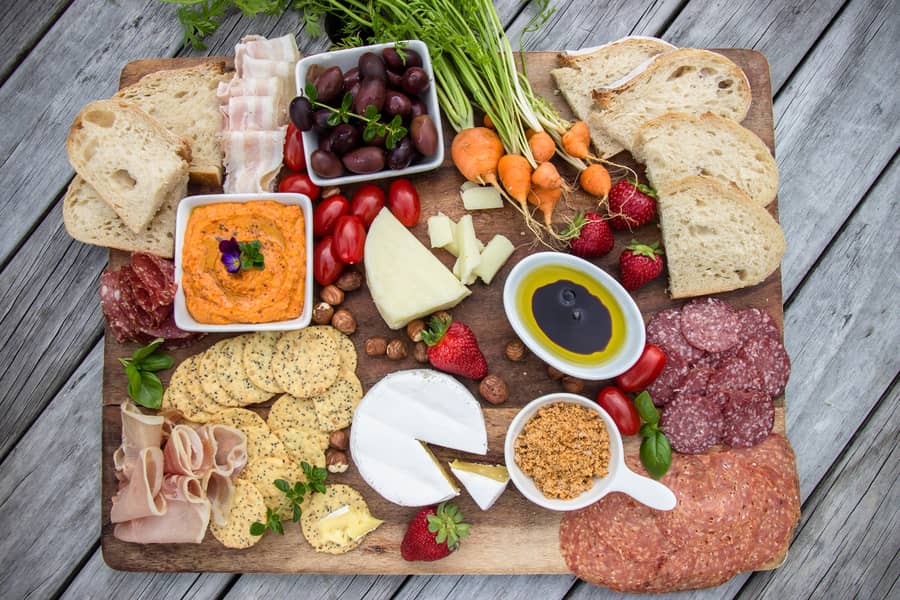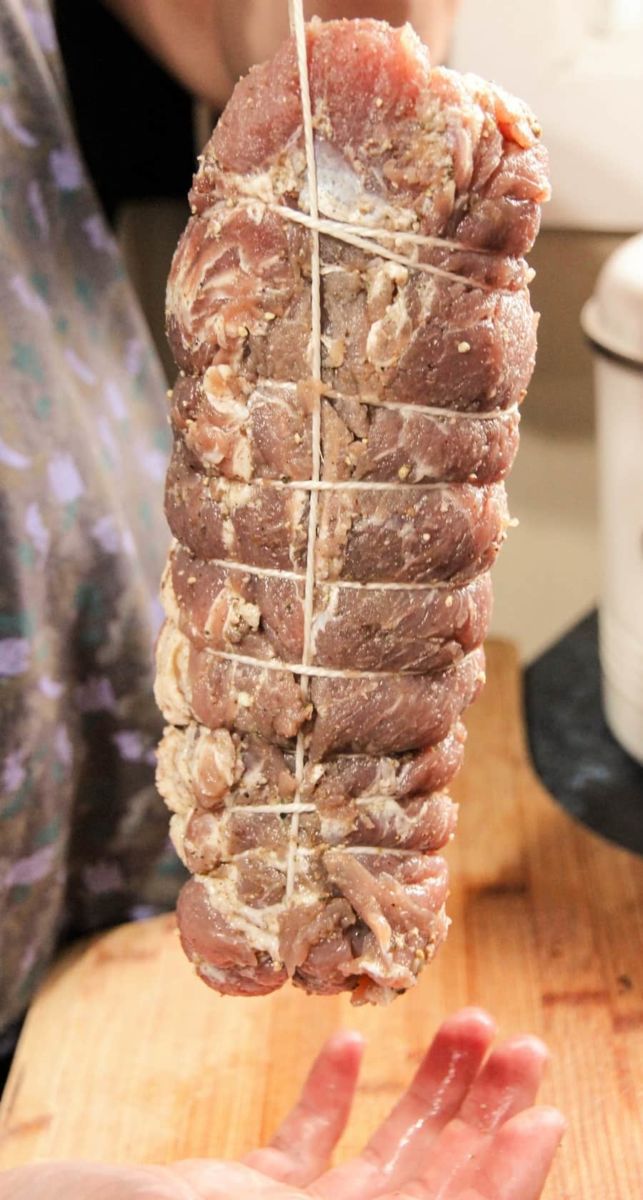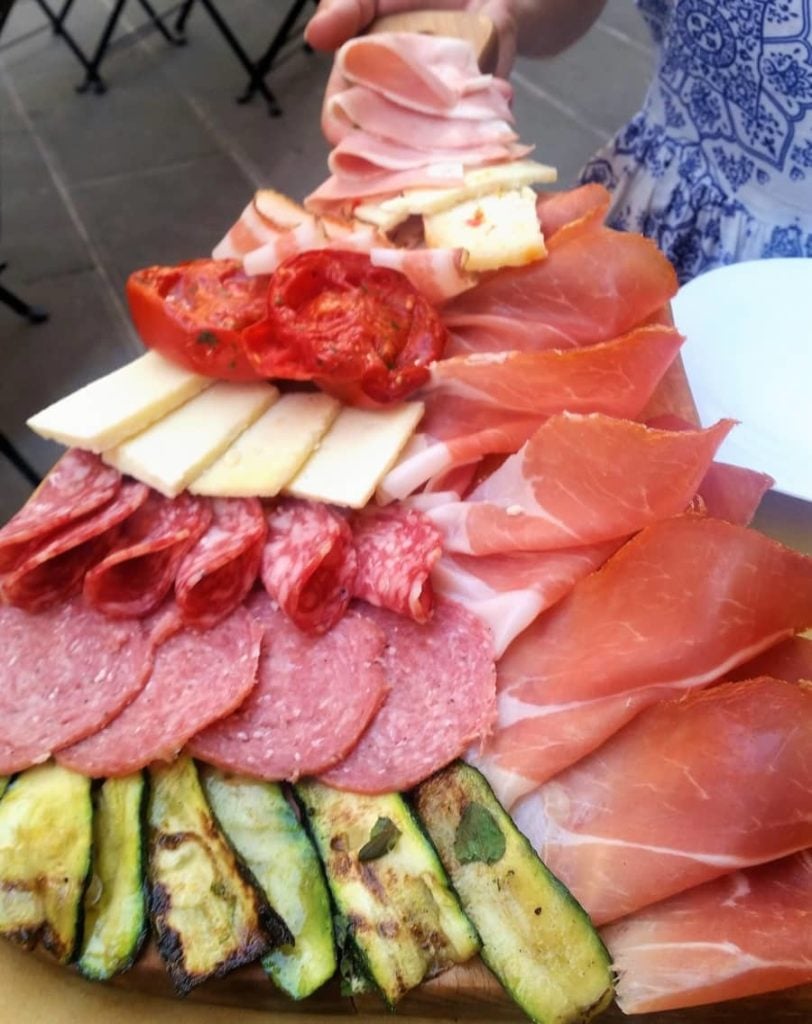Over the years, I’ve explored every part of traditional Italian curing — from whole muscles salted and hung for months to the carefully fermented sausages that perfume the air in small workshops across Italy. The deeper I went, the clearer it became that two words often confused outside of Italy actually describe a single family of traditions: salumi and salami.
Salumi refers to all cured meat products made primarily from pork — the umbrella category. Salami sits within that group, describing the ground, fermented, and dried sausages. In other words, every salami is a salumi, but not every salumi is a salami.
What Is Salumi?
Salumi represents the oldest and purest expression of Italian meat preservation. Long before refrigeration, families and traveling butchers in central and northern Italy — known as the Norcini — divided a pig into distinct muscles and used salt, air, and time to keep them edible through the year. The goal wasn’t only survival; it was flavor. Each cut, cured slowly, revealed its own character.
Typical whole-muscle salumi include prosciutto from the hind leg, pancetta from the belly, coppa from the neck, guanciale from the jowl, spalla from the shoulder, lardo from back fat, and lonza or lonzino from the loin. Each relies on just a few ingredients — salt, sometimes pepper or herbs, and patience.
| Salumi | Cut Used |
|---|---|
| Prosciutto | Hind leg (ham) |
| Pancetta (Tesa / Arrotolata) | Pork belly |
| Coppa / Capocollo | Neck and upper shoulder |
| Guanciale | Cheek or jowl |
| Spalla | Shoulder |
| Lardo | Back fat |
| Lonza / Lonzino | Loin |
These products are usually air-dried, not cooked, and sliced paper-thin once cured. Each cut carries its own ratio of lean to fat, influencing how it dries and the texture it develops over months of hanging. This focus on the individual muscle is what distinguishes salumi from other meat traditions around the world.
When I first visited small family cellars in Umbria and Emilia-Romagna, I realized how ritualized salumi making is. The salter keeps the rhythm of winter curing, the cellar master decides when to move meats from salting to drying, and every surface is scrubbed spotless with wine or vinegar between seasons. It’s as much respect as it is recipe.
What Is Salami?
Salami evolved as a way to use the trim and offcuts that couldn’t be hung whole. Meat and back fat are ground, seasoned, mixed with wine and spices, and stuffed into natural casings. After a short fermentation period that develops tang and preserves the mixture, the sausages are air-dried until firm and sliceable. A good salami should glisten with specks of white fat and release a deep, nutty aroma.
In contrast to whole-muscle salumi, salami is a blend — a recipe rather than a cut. Flavor depends on how coarse the grind is, which cultures are used for fermentation, and the type of meat included. Some salami are made purely from pork, others from beef, venison, or even wild boar. Each region of Italy claims its own style, shaped by local climate and taste.

Whether cured whole or ground, both salumi and salami rely on the same principle: transform fresh meat into something stable, flavorful, and deeply satisfying. The secret lies in balancing salt, air movement, humidity, and time — the quiet forces that turn pork into heritage food.
Classic Italian Salumi Cuts (Whole Muscles)
Each region of Italy has its signature whole-muscle cure, often shaped by microclimate and salt traditions passed down through families. The following cuts show how Italian craft transformed simple pork into art.
Prosciutto (Hind Leg)
Few foods capture Italian curing culture like prosciutto. The hind leg of the pig is trimmed, salted, and pressed to draw out moisture before months—sometimes years—of drying in mountain air. The result is a silky, sweet, and savory meat that needs nothing but thin slicing.
These legs can hang for 12 to 48 months depending on humidity and size. Properly aged prosciutto keeps remarkably well when stored correctly; here’s how long prosciutto really lasts and how to tell if it’s gone bad.
Prosciutto di Parma (PDO Tradition)
Only pigs raised in northern Italy’s Parma region, fed on grain and whey from nearby Parmigiano-Reggiano cheese production, can become Prosciutto di Parma. The curing houses there maintain strict European PDO (Protected Designation of Origin) standards to preserve centuries-old technique.
Because of these rules, no synthetic nitrates or nitrites are added—just sea salt, air, and time. I’ve covered the technical side of curing agents in my full breakdown on nitrates in cured meat. For an official explanation of the certification process, visit the official Prosciutto di Parma PDO consortium site.
Pancetta (Pork Belly)
Pancetta starts with the same cut as bacon but is seasoned and cured instead of smoked. Italians prepare it two ways: flat (tesa) or rolled (arrotolata). The rolled version develops a spiral of lean and fat when sliced, ideal for pasta dishes like carbonara.
After curing and drying, pancetta can be eaten uncooked when properly aged. Its concentrated pork flavor and balanced saltiness show how minimal intervention—just salt, pepper, and air—creates something extraordinary.
Coppa / Capocollo (Neck & Upper Shoulder)
The coppa runs from the neck into the upper shoulder, marbled with fine veins of fat that keep it tender. Cured whole, it’s rubbed with wine, pepper, and herbs before a long drying period. When sliced, the meat glows deep red with white ribbons of fat—one of the prettiest salumi to make or eat.

Modern butchery often divides this muscle in two, so I usually ask my butcher to keep the whole coppa intact for curing. It’s a small request that makes all the difference when hanging the cut evenly.
Guanciale (Jowl / Cheek)
Guanciale is sometimes called “the king of fat.” Taken from the cheek or jowl, it contains layers of creamy fat and firm meat that melt into sauces. Unlike pancetta, it’s never smoked. Italians treasure it in carbonara and amatriciana pasta, where thin cubes render slowly to create that unmistakable richness.
Spalla (Shoulder)
Spalla bridges the line between ham and shoulder roast. Traditionally, it’s seasoned with salt, pepper, and white wine, then aged bone-in for up to ten months. The flavor leans stronger than prosciutto, with a rustic texture that’s perfect for slicing thin or using in cooked dishes.
Lardo (Back Fat)
Lardo uses pure back fat, cured in salt and herbs until smooth and spreadable. The most famous version, Lardo di Colonnata, matures in carved marble basins that line the cellars of the small Tuscan town of Colonnata. Locals believe the marble’s porosity affects the salt exchange and imparts a delicate sweetness to the fat.
This unique technique earned a European PGI (Protected Geographical Indication) mark. For background on this centuries-old process, see the Lardo di Colonnata PGI designation details.
Lonza / Lonzino (Loin)
One of the leanest salumi, lonza (or lonzino) comes from the boneless loin—the same muscle as pork chops. A light coat of herbs and garlic complements its mildness, while a thin fat cap keeps it from drying too quickly. It’s a forgiving cut for anyone starting out in whole-muscle curing.
Though pork remains the classic base, many modern makers use venison, goat, or beef for a twist. I’ve written separately about cured meats that aren’t pork if you want to explore beyond traditional salumi.
Together, these whole-muscle salumi demonstrate the heart of Italian curing: treat each cut with respect, rely on salt and airflow, and let time do the work. Up next, I’ll look at the other branch of the family—Italy’s regional salami styles—and explain why cured meats can look raw but aren’t served raw like steak tartare.
Bringing It Together on a Charcuterie Board
When you line up slices of prosciutto, coppa, and salami on the same board, you can see Italy’s entire curing tradition in miniature. The differences in color, texture, and aroma tell the story of how salt, time, and air can express terroir just like wine does.
Classic pairings balance richness with acidity — a drizzle of aged balsamic, pickled vegetables, or even a few slices of pear or apple. I always let the meats come to room temperature before serving; this softens the fat and releases the full perfume of each cut.
Across the board, the contrast between salumi and salami adds variety. The lean, silky texture of whole-muscle meats sits beautifully beside the spiced tang of fermented sausages. Together, they form the backbone of Italy’s charcuterie identity.

Today, restaurants worldwide use the term charcuterie to describe these mixed cured selections. It may sound French, but the Italian influence runs deep. Whether sliced thin at a small trattoria or prepared in your kitchen, the essence remains: preservation as craft and celebration.
Expert Tip
Store salumi and salami properly once opened. Wrap them tightly in butcher paper (not plastic) and keep them refrigerated in the coldest part of the fridge. Whole pieces last weeks; sliced portions should be eaten within a few days for the best texture and aroma. Always slice just before serving.
Alternatives
If you can’t find authentic Italian imports, look for local artisans producing cured meats in the same style. Many small-batch makers now craft prosciutto-style hams, capicola, and traditional dry-cured sausages using heritage breeds and natural casings. They might not carry a PDO label, but the flavor and spirit of Italian curing remain alive wherever careful curing is practiced.
What is the difference between Salumi and Salami?
Salumi is the broader Italian category that includes all cured pork products — both whole-muscle cuts and sausages. Salami refers specifically to the ground, seasoned, fermented, and dried sausages within that family.
Can Salami and Salumi be eaten raw?
Although they may look raw, traditional Italian cured meats are safe to eat as they are. Salt curing, fermentation, and air-drying remove moisture and preserve the meat naturally.
Is Charcuterie the same as Salumi?
Not exactly. Charcuterie is a French term that covers all prepared or cured meats, while Salumi refers specifically to Italian cured pork products like prosciutto, pancetta, and salami.
How long does salami last once opened?
Whole, unsliced salami can last several weeks in the fridge when wrapped in paper. Once sliced, it’s best eaten within a few days to preserve texture and flavor.
Which Italian cured meat is your favorite — prosciutto, pancetta, or a bold Calabrese salami? Share your thoughts or questions below. I’d love to hear what’s hanging in your curing setup or what you’re serving on your next board.

Tom Mueller
For decades, immersed in studying, working, learning, and teaching the craft of meat curing, sharing the passion and showcasing the world of charcuterie and smoked meat. Read More
